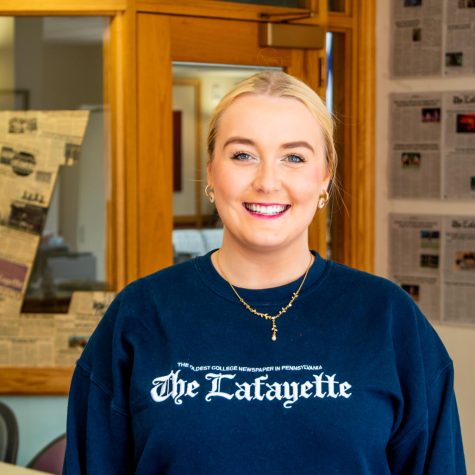Every year at Lafayette a new class of rising freshmen pore over packing lists, scroll through endless Facebook pages in search of friendly faces, and prepare to ease their families into their imminent departure from home. For international students, however, an acceptance letter is not the only document between them and a college degree, and no amount of preparation can completely guarantee their unimpeded arrival to campus in the fall.
As of 2019 there are over one million international students studying in the United States. According to a report from the NAFSA Association of International Educators, international students at U.S. schools contributed $41 billion to the U.S. economy and supported 458,290 jobs during the 2018-2019 school year.
However, over the past two years, there has been a decline in the number of new international students entering U.S. institutions. A nearly seven percent decline was logged in the 2017-2018 school year according to a Politico report.
One explanation for this phenomenon may be the Trump administration’s scrutiny of student visa practices and policies. A 2018 Trump administration policy change to strengthen penalties for visa violations in the United States has been stalled by court injunction after widespread outcry from higher education institutions. Processing times at the United States Citizenship and Immigration Services have increased in recent years, as well as visa application fees and Student and Exchange Visitor Information System (SEVIS) fees.
In 2019, the Atlantic reported that 83 percent of schools that participated in the Institute of International Education’s 2017-18 survey cited delay or denial of student visas as a factor contributing to the decline in numbers of international students on their campuses.
The impact of further policy proposals was recently brought up in Lafayette’s student government, where the arrival of internship season triggered uncertainty with regards to international students’ ability to participate, according to head of the academic affairs committee Basit Balogun.
Janine Block, who is the Assistant Director of Intercultural Development and International Student Advising, said she was less worried.
“[The policy proposals] shouldn’t have too much of an effect on how Lafayette students at least engage with internship opportunities,” she said.
In her career at the college, Block has kept track of and facilitated the upkeep of hundred of documents required for students to lawfully enter the U.S. and remain in attendance at Lafayette.
With regards to Lafayette’s own impediments in the application process, Block said that one of the main issues was the amount of time it takes to complete an application.
“They did change the application from two to seven pages, and I suspect that just that change in number of pages also increased the time that it took each person, each officer to adjudicate an application,” she said. “We have not really seen some of the issues that other schools have experienced, and I’m not saying it’s because we’ve done something differently. I am just really grateful that last year we did not have anybody that was affected by this change in the processing times, and I’m hopeful that that’s actually going to be better this year.”
Though Lafayette students have not experienced a significant impact from the new conditions, the struggle to navigate bureaucratic immigration and visitation processes is far from over after a student has been issued a student visa.
Block also manages the documentation for Optional Practical Training (OPT), a stipulation for those with F-1 visas, which provide for a year-long period of work with the goal of gaining practical training to complement their education. For STEM majors, this benefit can be further renewed for two years after the initial year is completed.
On Tuesday, Block brought in Attorney Art Serratelli of the Serratelli Mijal PLLC Immigration Law Firm, to discuss options for students looking to study, work, or live in the U.S. after graduation.
“Our immigration system is broken”, he prefaced, as he introduced students to a variety of paths to obtaining a U.S. work visa.
Among his pieces of advice were suggestions to obtain employment at a smaller or mid-sized company with employers more willing to invest the resources to sponsor students’ applications, as well as applying for a number of specialized visas less popular than the standard H1-B work visa, of which there is a maximum issuance set and the awarding of visas is determined by random selection.
“While every year we’ve definitely had grads successfully chosen in the H1-B lottery after being on OPT or STEM OPT, I would say that I definitely have seen an increase in the number of people choosing grad school instead of working immediately after graduation,” he said. “And though I can’t know for sure each person’s reasoning, for some it is likely attributed in part to the difficulties associated with the H1-B cap.”
While international students continue to navigate burdensome visa and immigration processes in order to obtain a Lafayette education and put it to use, for the time being, they have been able to do so with few additional hurdles.






















































































































